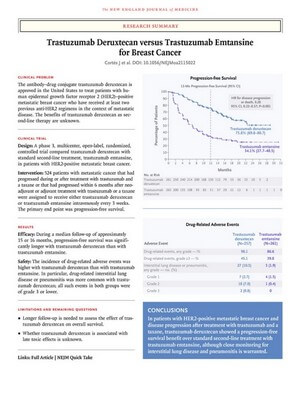Postmastectomy Radiation Therapy: An ASTRO-ASCO-SSO Clinical Practice Guideline
Guidelines for post-mastectomy radiation include patients who received neoadjuvant therapy, with or without residual disease after treatment. A good topic to review.

Guidelines for post-mastectomy radiation include patients who received neoadjuvant therapy, with or without residual disease after treatment. A good topic to review.
Our site participated in this study, where patients were tested for ESR1 mutations via circulating tumor DNA (ctDNA). Those who tested positive were switched to camizestrant (Cami), which demonstrated improved progression-free survival.
Vepdegestrant is an oral proteolysis-targeting chimera (PROTAC) estrogen receptor (ER) degrader that directly utilizes the ubiquitin–proteasome system. It was compared to fulvestrant in patients who had received one prior line of hormonal therapy with a CDK4/6 inhibitor. Among patients with ESR1 mutations, Vepdegestrant demonstrated a median progression-free survival (PFS) of 5.0 months versus 2.1 months with fulvestrant. In the overall population, the median PFS was 3.8 months for Vepdegestrant and 3.6 months for fulvestrant, indicating that the drug showed particular efficacy in tumors harboring ESR1 mutations.
Elinzanitant, a neurokinin-targeted therapy, has been shown to reduce vasomotor symptoms compared to placebo. These symptoms are one of the reasons some of my patients discontinue aromatase inhibitor (AI) therapy, so Elinzanitant presents a promising alternative to help manage these side effects. Additionally, Fezolinetant is already approved and available on the market.
The INAVO120 trial evaluated inavolisib + palbociclib–fulvestrant vs placebo + palbociclib–fulvestrant in patients with PIK3CA-mutated, HR+/HER2– advanced breast cancer progressing on or shortly after adjuvant endocrine therapy (ET). Inavolisib significantly improved overall survival (OS) (34.0 vs 27.0 mo) and progression-free survival (PFS) (17.2 vs 7.3 mo), with a higher objective response rate (ORR) (62.7% vs 28.0%) and longer DoR (19.2 vs 11.1 mo). Toxicities were manageable but included more hyperglycemia (63.4%), stomatitis (55.3%), GI, and ocular AEs. Bottom line: this triplet sets a new bar for first-line PIK3CA-mutant HR+ MBC, but we’ll need to stay vigilant about metabolic and mucosal side effects as we bring it into practice.